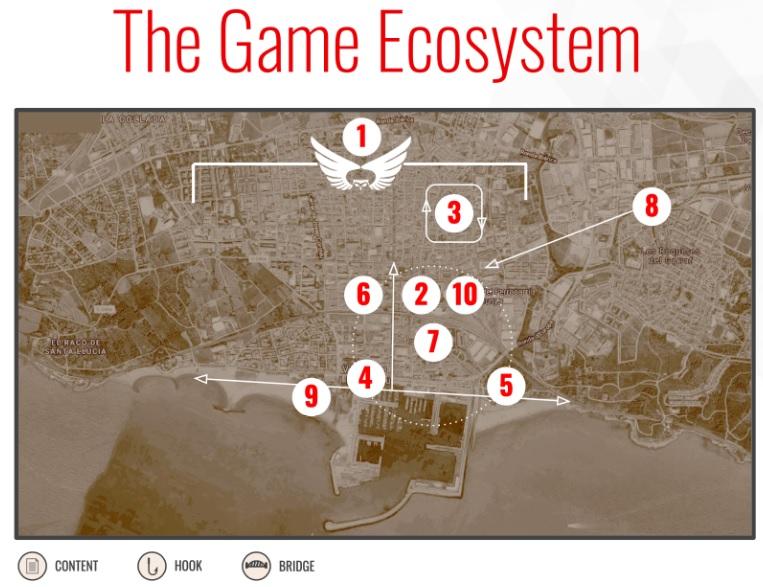MED GAIMS dirige la conception d'un écosystème de jeu pour des expériences gamifiées collectives à Vilanova i la Geltrú, Espagne

Ce contenu est disponible uniquement en anglais
Funded by the ENI-CBCMED, the MED GAIMS project develops games in tourist destinations not for fun only, but with the goal of creating memorable experiences for the visitors in order to increase tourist flows, and to develop jobs within the gamification industry. Ten games will be developed in each of Lebanon, Jordan, Italy, and Spain; five analog games, and five digital games. All the games experiences have to be related with the tourists’ destinations, their cultural heritage and their attractions. It is important to note that the targeted destinations within MED GAIMS are not first-class destinations where the tourist flows are common and the effect of the project would be hard to evaluate.
Vilanova i la Geltrú: the Spanish case
The games in Spain will be implemented in Vilanova i la Geltrú, a town of 65,000 inhabitants located 45km south of Barcelona. Vilanova i la Geltrú is not only a tourist destination but also enjoys tourist resources to become a point of interest in the tourism industry including: Mediterranean climate, long sandy beaches, rich gastronomy, extensive cultural heritage and several museums that provide indoor attractions.
The Game Ecosystem
While MED GAIMS project offers the chance of deploying 10 games simultaneously in one destination, we have the choice of creating 10 singular games with no inter-connection, or thinking strategically to use the common elements of the destination in creating a holistic Game Ecosystem.
An ecosystem in nature is a biological community of interacting organisms and their physical environment. In our gamification case, we are settling 10 game experiences in the same physical environment. To make this system work coherently, we need to interconnect the games. There may be several connection approaches, yet the first layer in all cases should target the functionality of each game. To make the whole setting work, we need to play each game with the unified purpose of creating flows between the games and making them interact.
The functionalities of the games have been defined under the following three categories:
Hook games: The experiences attract the attention of the visitor to the destination. The user does not need to be physically in the tourist destination, but the game awakens the interest of visiting the place due to the inherent content of the game. The content could be the setting, the pictures, the background or the embedded story.
Content games: Experiences provide the visitor with content and interaction with a certain location in the destination. The user needs to be physically in the place in order to enjoy the experience. Potential places are museums, squares, old quarters, exposition rooms, etc.
Bridge games: Experiences where the visitor enjoys going from one place to another in the destination. The user needs to be physically in the place in order to enjoy the experience. In this case the games are used as connectors and help the visitor discover the town, and at the same time facilitate the access to content games.
Finally, a hybrid games could have a mixture of the previous concepts, For example a game that can be played in the first and second chapter from home, but later needs to be played at the physical destination in order to complete the full experience. In this example, we would have a mixture of a hook and a bridge game.
A clockwork engine
With the right use of each of the type of games we can create the network, where each game has its own functionality within the whole system. Hook Games awaken the interest of the visitors in the destination and bring them to the physical setting, The Content Games provide interaction with a certain site, and finally the Bridge Games facilitate moving around within the destination and connecting locations with content games.
Conclusion
The use of game experiences depending on their functionality is only the first layer of building a complex games ecosystem. Whatever is being designed is built around the user, and how this user is going to interact with the system. The functionality is about feeding only the ecosystem but not the user, and in order for the system to become holestically successful, the user has to take active part in the experiences. This article introduces the foundations of the game ecosystem, paving the way to designing the whole gamified experience: storytelling, platforms, mechanics and art, and how these are individually designed and interweaved with the other game experiences. With this concept and the user-centered design, we can start creating attractive gamification.







